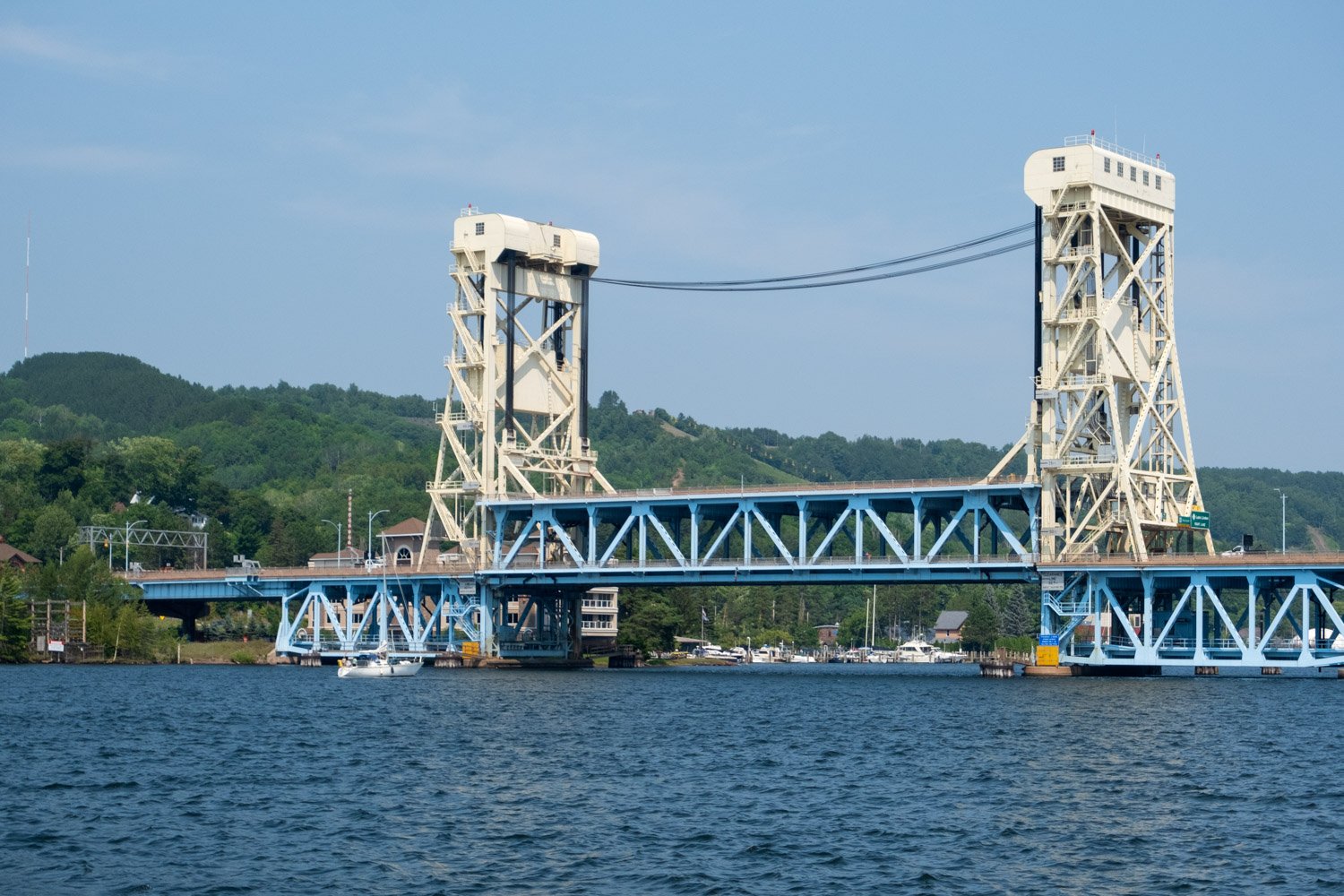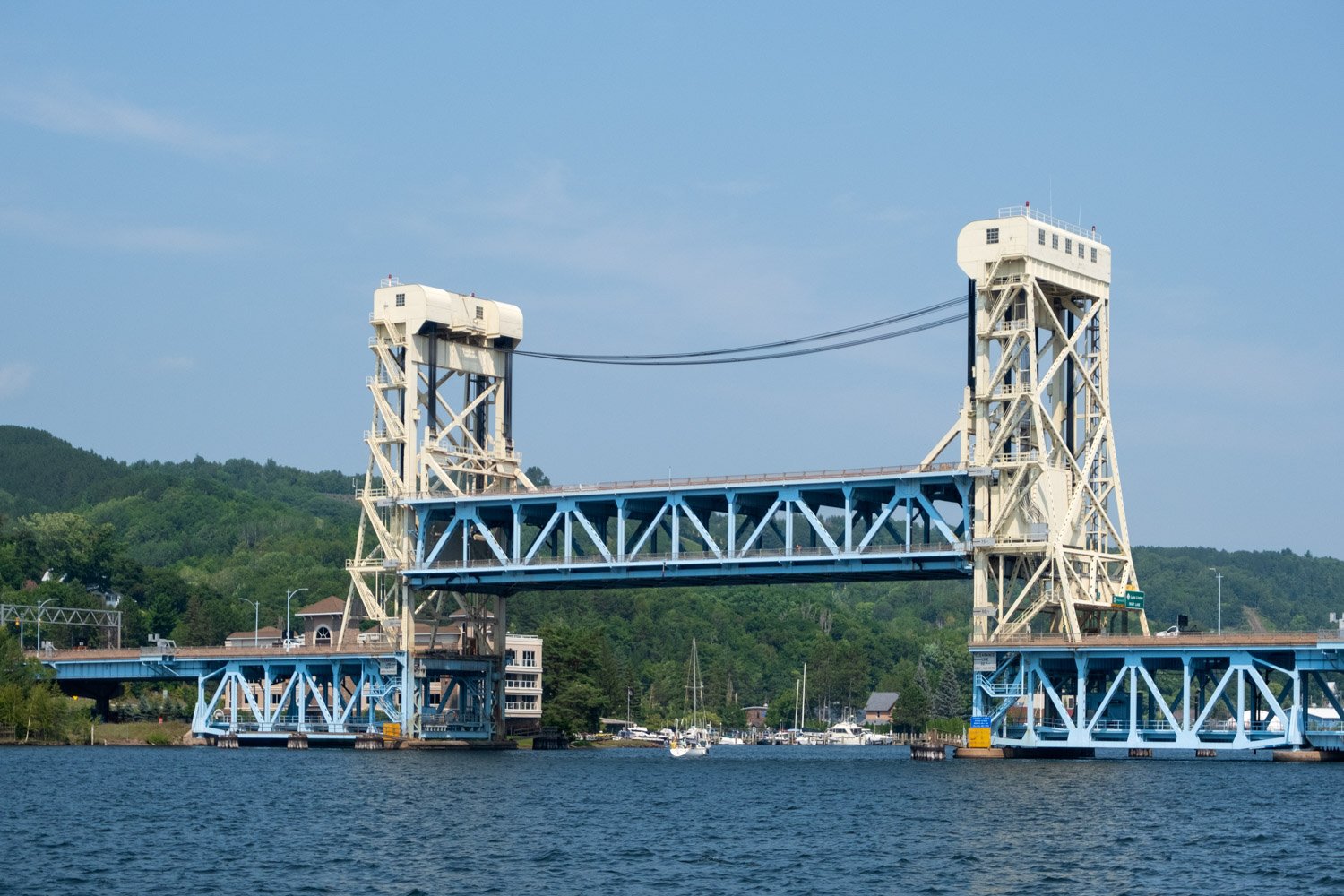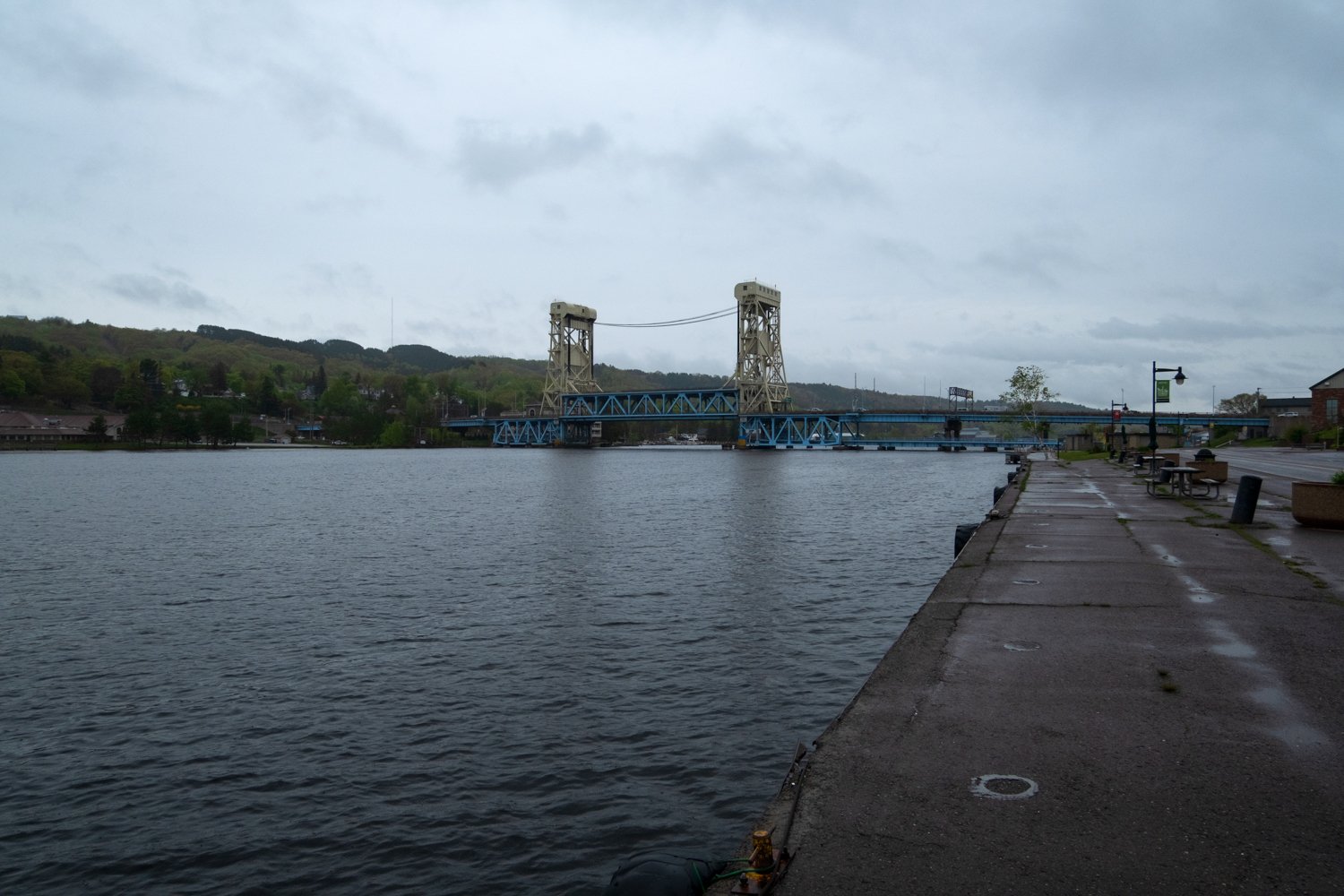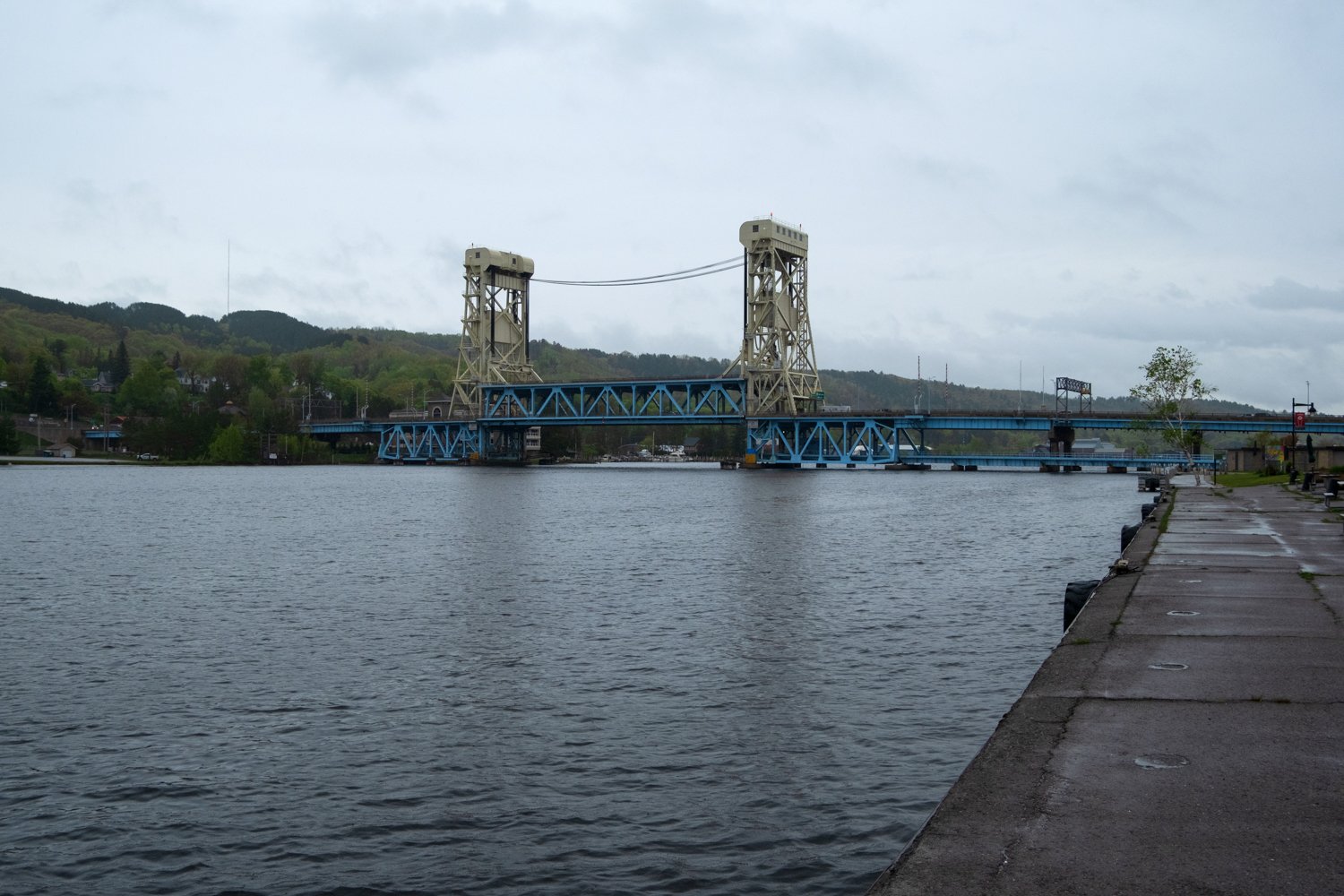Portage Lake Lift Bridge





The Keweenaw Waterway has been vital for transportation since before it was dredged to support the copper boom of the mid-1800s, as natives used the river to navigate the Keweenaw and for fishing. In the 1860s, the river was dredged and extended so that freighters could carry copper from the mines to larger cities down south.
With the creation of a continuous waterway from Superior to Superior, a bridge was necessary to get to Copper Island and the mines of the north. The first bridge was built of timber in the 1870s and used a swing-bridge style construction to enable larger boats carrying copper and other supplies to pass, but it was not very effective and caused many backups.
By 1895 a steel bridge replaced the wooden one, which was sturdier. The bridge was hit by a ship in 1905, and a number of other close calls paired with the tedious nature of swing-style bridges forced a change to be made.
In 1959, the current Portage Lake Lift Bridge opened and has been operating ever since. It features a dual-level design which originally allowed for a seamless transition between marine traffic, automobile travel, and railroad freight. The rail line was abandoned in the 1980s due to a lack of product to be moved over the bridge, and freighters are not as common in the Keweenaw Waterway as decades ago, so the bridge does not shift as often as it once did.
In the winter, you can cross the bridge on a snowmobile, which I have to imagine would be quite the sight. We were able to watch the bridge rise for a sailboat to cross underneath, which was very neat to see. Whether you are crossing it via car, on foot, on top of the rumble of a snowmobile, or under it via watercraft, definitely take notice of the engineering that went into this historic bridge.
